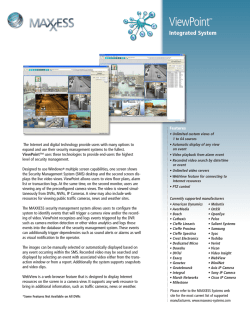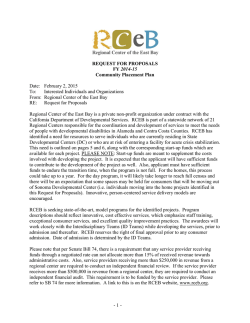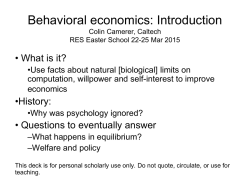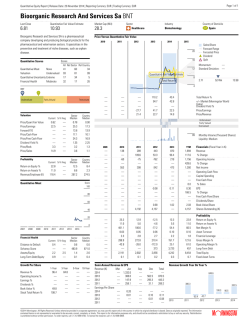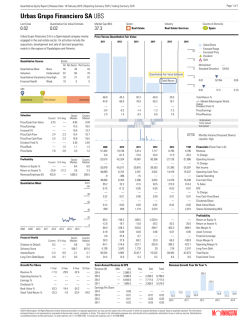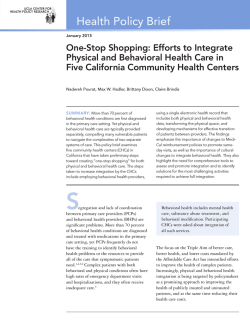
2 - CSUS
Chapter Two Management Theory Essential Background for the Successful Manager McGraw-Hill/Irwin Copyright © 2009 by The McGraw-Hill Companies, All Rights Reserved. Major Questions You Should Be Able to Answer 2.1 What’s the payoff in studying different management perspectives? 2.2 What can the classical viewpoint teach me? 2.3 What can I learn from the behavioral viewpoint? 2.4 If the manager’s job is to solve problems, how might the two quantitative approaches help? 2-2 Major Questions You Should Be Able to Answer 2.5 How can the exceptional manager be helped by the systems viewpoint? 2.6 Is there one best way to manage in all situations? 2.7 Can the quality-management viewpoint offer guidelines for true managerial success? 2.8 How do I build a learning organization? 2-3 Two Overarching Perspectives about Management • Historical perspective – classical, behavioral, and quantitative • Contemporary perspective – systems, contingency, and quality-management 2-4 Classical Viewpoint: Scientific & Administrative Management Figure 2.1 2-5 Evidence Based Management • Jeff Pfeffer and Bob Sutton at Stanford argue that we need less emotion and politics in decisions. Learn to rely on hard facts about what works. 2-6 Classical Viewpoint: Scientific & Administrative Management • Scientific management emphasized the scientific study of work methods to improve the productivity of individual workers Frederick W. Taylor, Frank and Lillian Gilbreth 2-7 Classical Viewpoint: Scientific & Administrative Management Principles of Scientific Management 1. Scientifically study each part of the task 2. Carefully select workers with the right abilities 3. Give workers the training and incentives to do the task 4. Use scientific principles to plan the work methods 2-8 Classical Viewpoint: Scientific & Administrative Management • Administrative management concerned with managing the total organization • Henri Fayol French engineer and industrialist first to identify the major functions of management 2-9 Max Weber – Father of Modern Bureaucracy 2 - 10 Five Positive Bureaucratic Features 1. 2. 3. 4. 5. A well-defined hierarchy of authority Formal rules and procedures A clear division of labor Impersonality Careers based on merit 2 - 11 Why the Classical Viewpoint is Important? • Work activity was amenable to a rational approach • Through the application of scientific methods, time and motion studies, and job specialization it was possible to boost productivity 2 - 12 Behavioral Viewpoint: Behaviorism, Human Relations, & Behavioral Science • Behavioral viewpoint emphasized the importance of understanding human behavior and of motivating employees toward achievement 2 - 13 Behavioral Viewpoint: Behaviorism, Human Relations, & Behavioral Science Hugo Munsterberg - father of industrial psychology 1. Study jobs and determine which people are best suited to specific jobs 2. Identify the psychological conditions under which employees do their best work 3. Devise management strategies to influence employees to follow management’s interests 2 - 14 Behavioral Viewpoint: Behaviorism, Human Relations, & Behavioral Science Mary Parker Follett - social worker and social philosopher 1. Organizations should be operated as “communities” 2. Conflicts should be resolved by having managers and workers talk over differences and find solutions that would satisfy both parties 3. The work process should be under control of workers with relevant knowledge 2 - 15 Behavioral Viewpoint: Behaviorism, Human Relations, & Behavioral Science • Hawthorne effect employees worked harder if they received added attention, thought that managers cared about their welfare and that supervisors paid special attention to them Elton Mayo 2 - 16 Behavioral Viewpoint: Behaviorism, Human Relations, & Behavioral Science Maslow’s hierarchy of needs • Physiological • Safety • Social • Esteem • Self-actualization 2 - 17 Behavioral Viewpoint: Behaviorism, Human Relations, & Behavioral Science Douglas McGregor – Theory X versus Theory Y • Theory X represents a pessimistic, negative view of workers workers are irresponsible, resistant to change, lack ambition, hate work, and want to be led 2 - 18 Behavioral Viewpoint: Behaviorism, Human Relations, & Behavioral Science • Theory Y represents an optimistic, positive view of workers Workers are considered capable of accepting responsibility, self-direction, self control and being creative 2 - 19 Behavioral Viewpoint: Behaviorism, Human Relations, & Behavioral Science • Behavioral science relies on scientific research for developing theories about human behavior that can be used to provide practical tools for managers 2 - 20 Example: Application of Behavioral Science Approach Which is better – competition or cooperation? • Alfie Khan has two reasons for competition’s failure 1. Success often depends on sharing resources 2. Competition does not promote excellence 2 - 21 Quantitative Viewpoints: Management Science & Operations Research • Quantitative management application to management of quantitative techniques, such as statistics and computer simulations Management science, operations management 2 - 22 Quantitative Viewpoints: Management Science & Operations Research • Management science Stresses the use of rational, science-based techniques and mathematical models to improve decision making and strategic planning 2 - 23 The tyranny of chasing numbers • War fighting Stats from Iraq and Afghanistan • Law enforcement New York Comstat 2 - 24 Quantitative Viewpoints: Management Science & Operations Research • Operations management focuses on managing the production and delivery of an organization’s products or services more effectively work scheduling, production planning, facilities location and design 2 - 25 The Contemporary Perspective Figure 2.2 2 - 26 Systems Viewpoint • Systems viewpoint regards the organization as a system of interrelated parts collection of subsystems part of the larger environment 2 - 27 2 - 28 Systems Viewpoint • Open system continually interacts with its environment • Closed system has little interaction with its environment 2 - 29 Example: The Contingency Viewpoint • When does using data-mining software to build business make sense? • Gary Loveman, CEO of Harrah’s Entertainment analyzed vast amounts of data to identify its best customers 2 - 30 Contingency Viewpoint • Contingency viewpoint emphasizes that a manager’s approach should vary according to the individual and the environmental situation Most practical because it addresses problems on a case-by-case basis 2 - 31 Quality-Management Viewpoint • Quality control the strategy for minimizing errors by managing each stage of production • Quality assurance focuses on the performance of workers, urging employees to strive for “zero defects” 2 - 32 Quality-Management Viewpoint • Total quality management (TQM) comprehensive approach-led by top management and supported throughout the organization-dedicated to continuous quality improvement, training, and customer satisfaction Deming, Juran 2 - 33 Total Quality Management 1. Make continuous improvement a priority 2. Get every employee involved 3. Listen to and learn from customers and employees 4. Use accurate standards to identify and eliminate problems 2 - 34 The Learning Organization in an Era of Accelerated Change • Learning organization organization that actively creates, acquires, and transfers knowledge within itself and is able to modify its behavior to reflect new knowledge 2 - 35 The Learning Organization in an Era of Accelerated Change How to build a learning organization 1. Build a commitment to learning 2. Work to generate ideas with impact 3. Work to generalize ideas with impact 2 - 36 Project Feedback • You are competing against a standard not each other • Detail your action plan. Who is responsible for what? when is it to be done? What does excellent look like? • Detail performance. What does Ok look like? What does excellent look like? Are you measure input, output or body temperature? 2 - 37
© Copyright 2026
